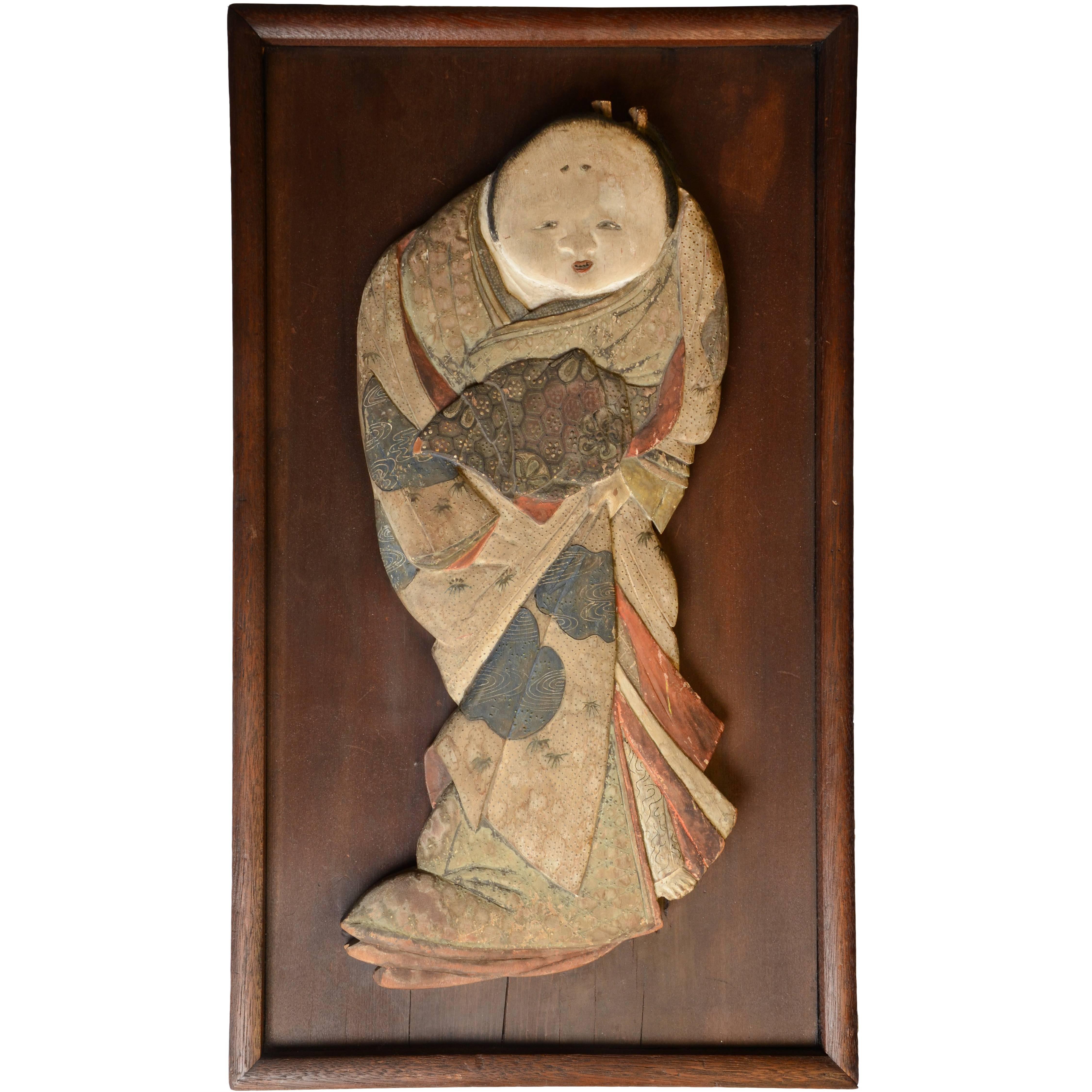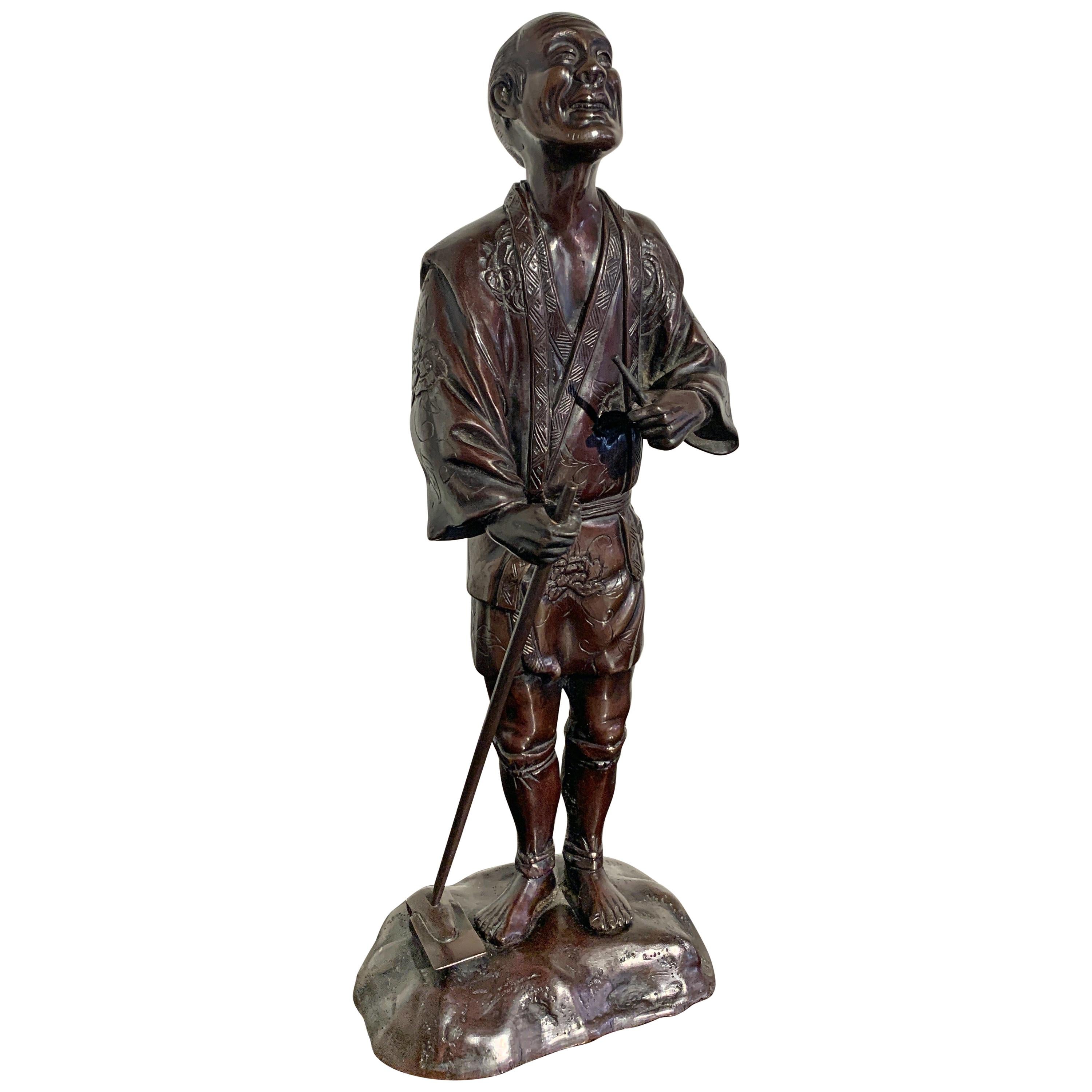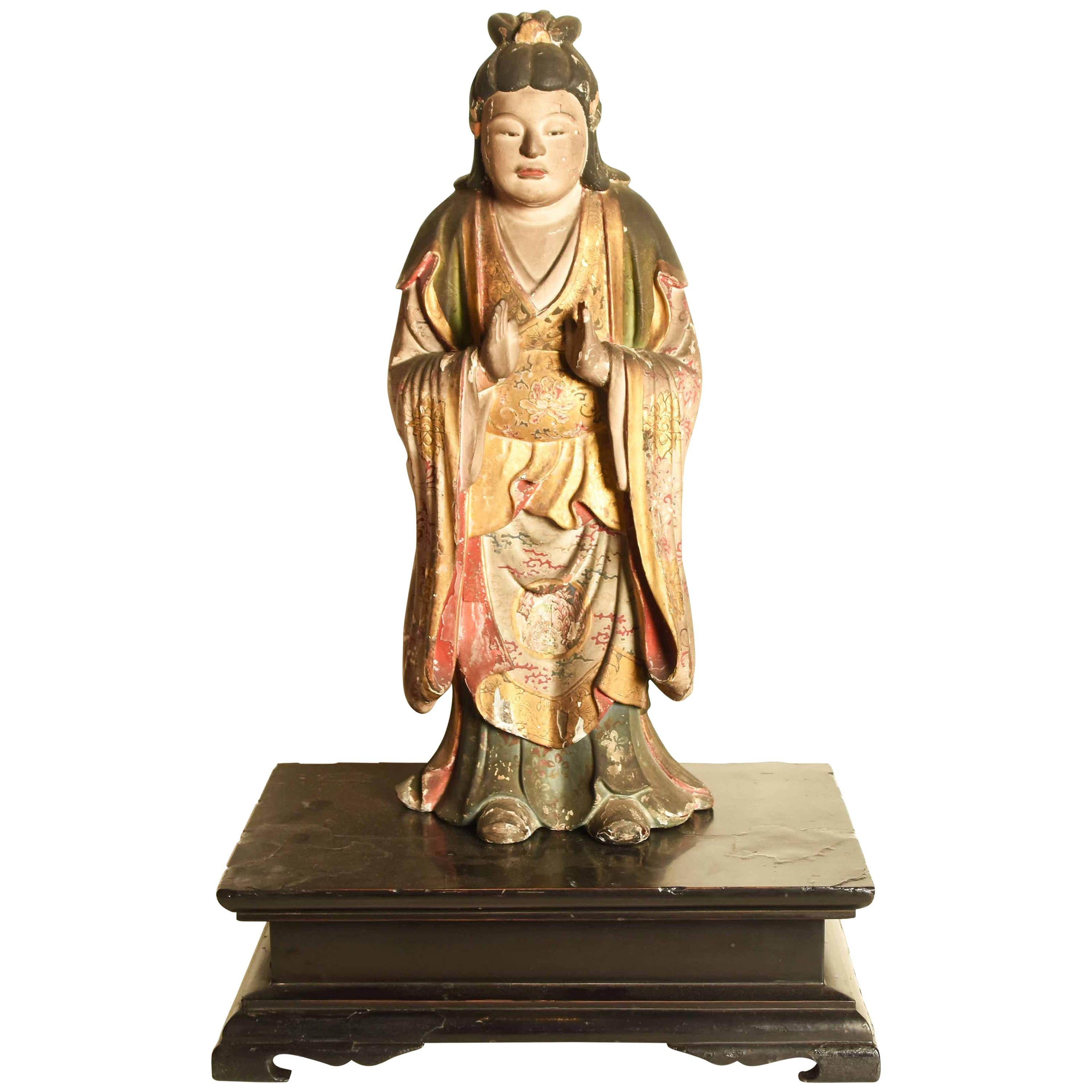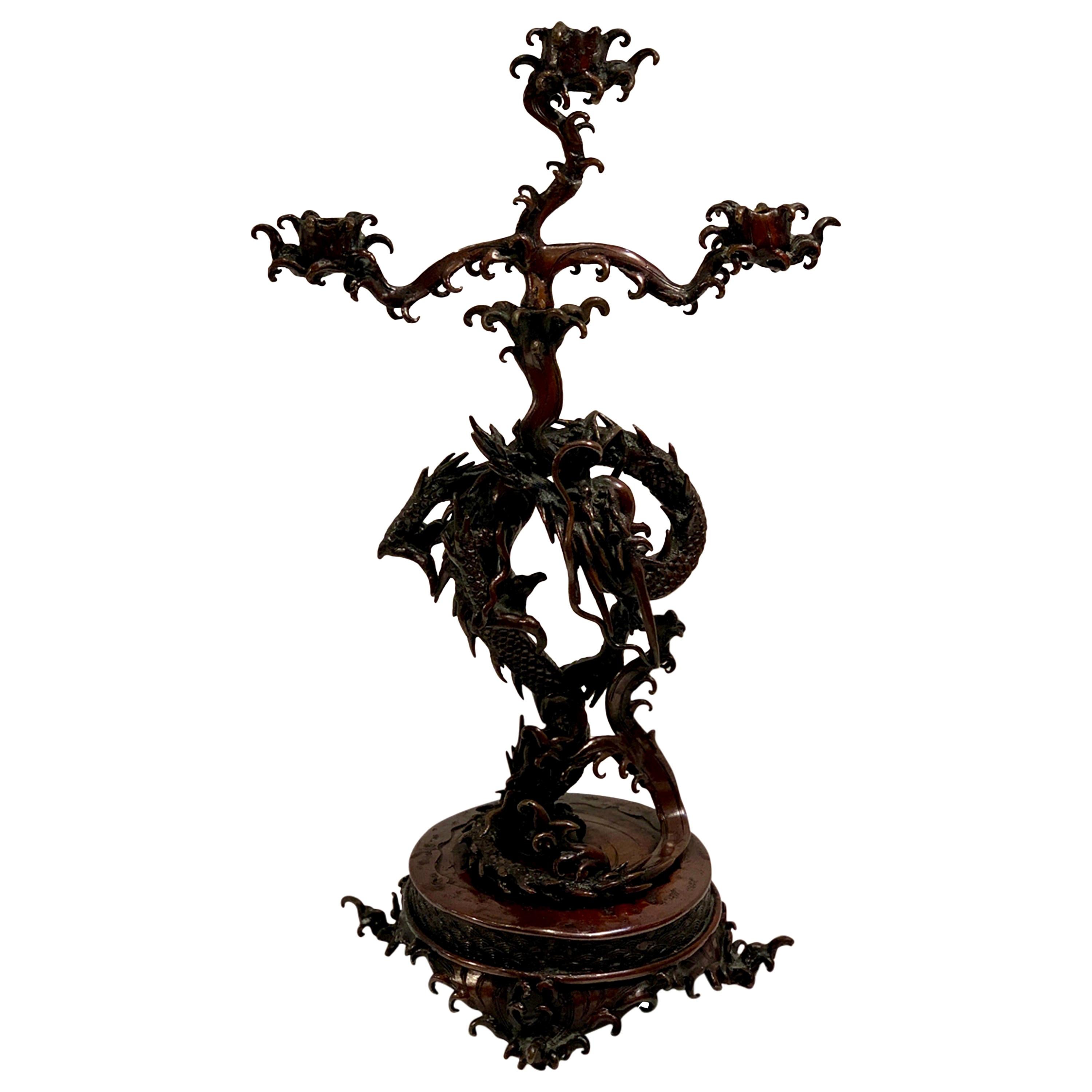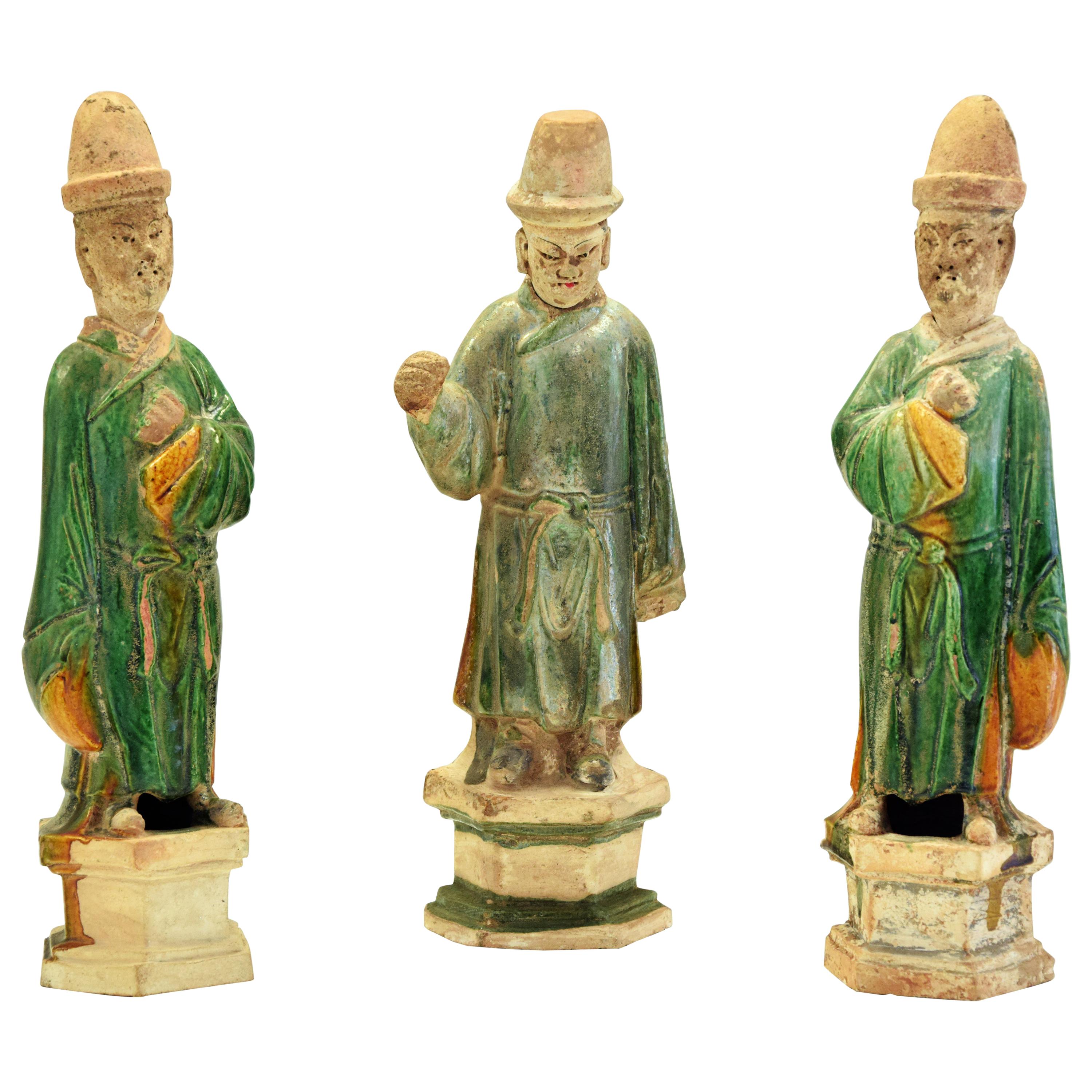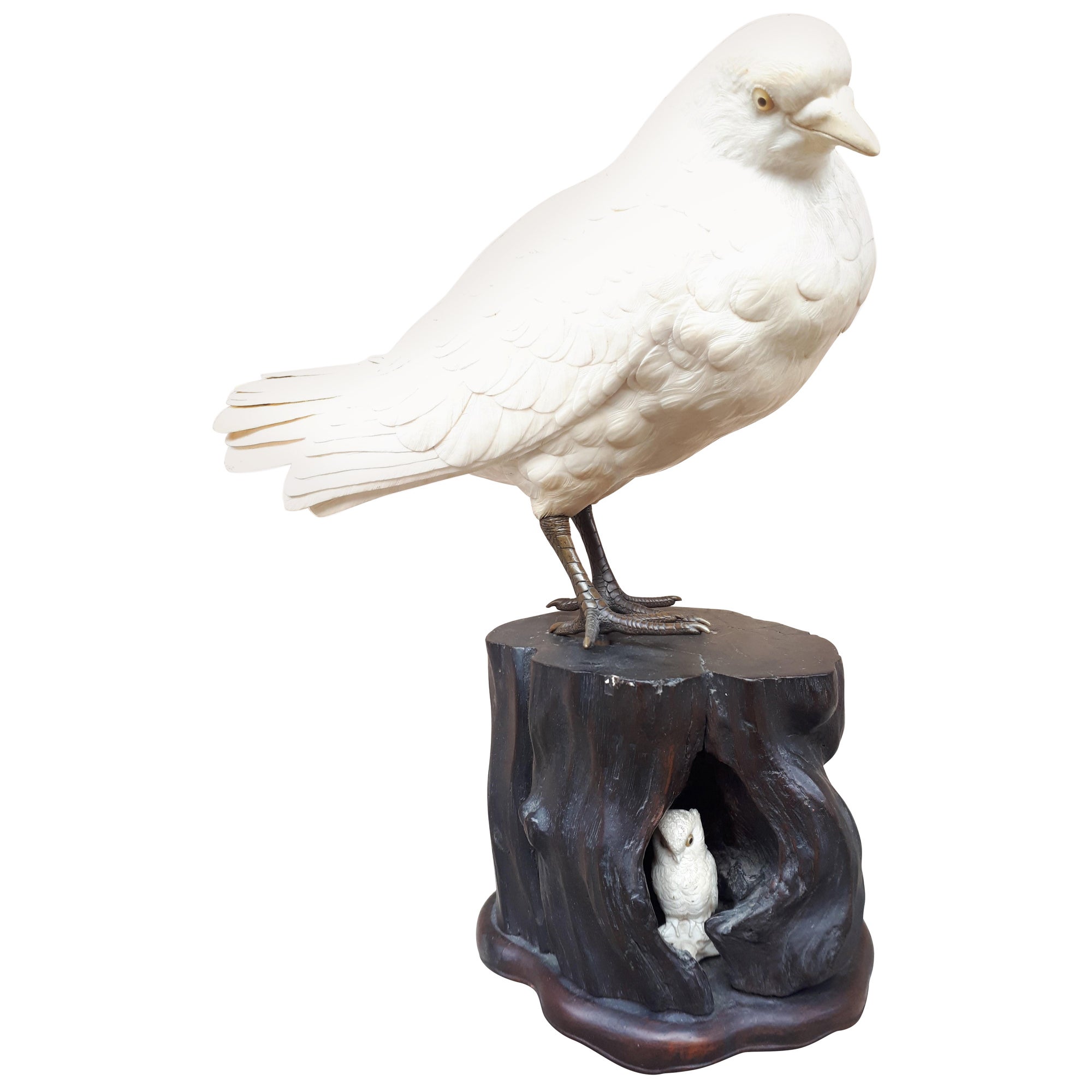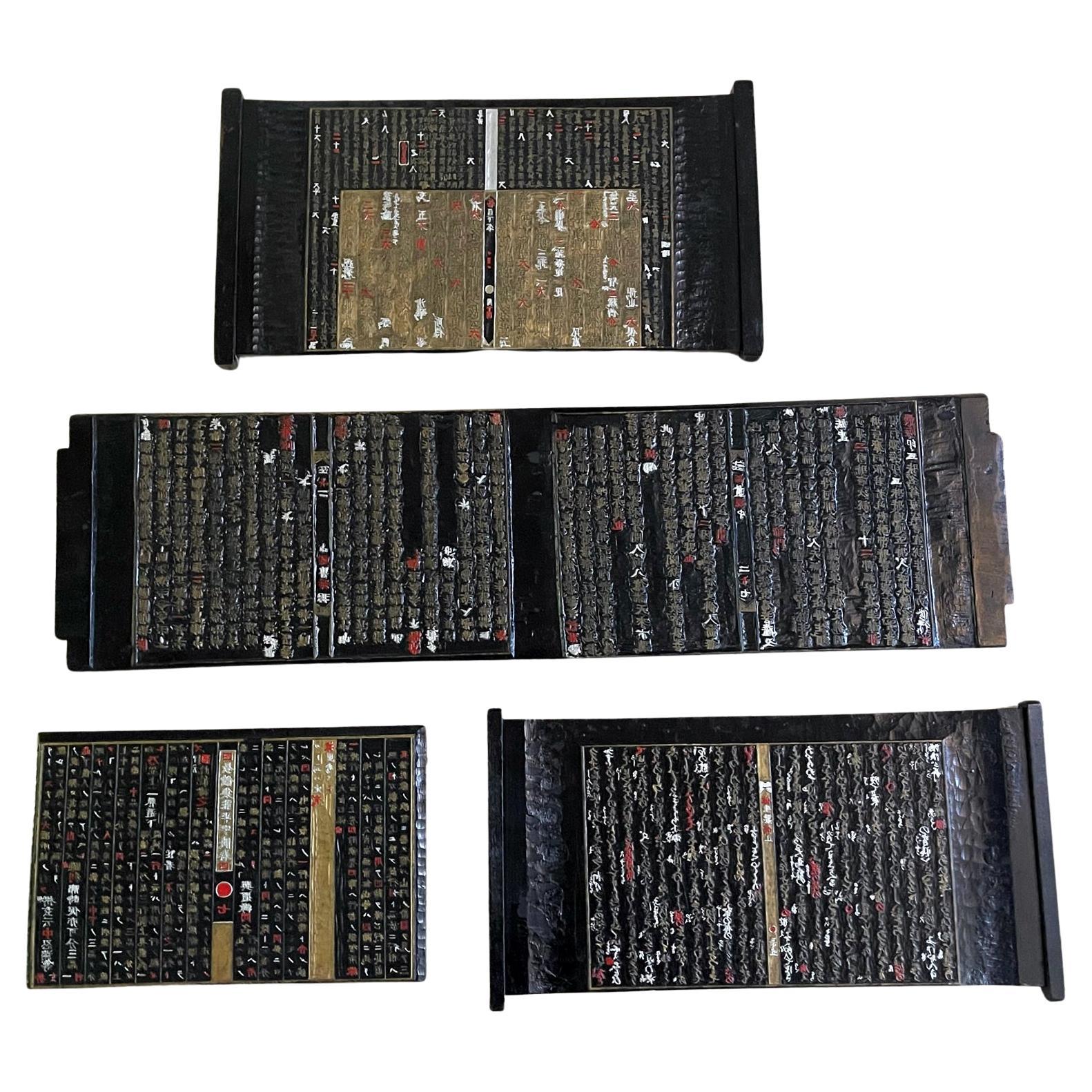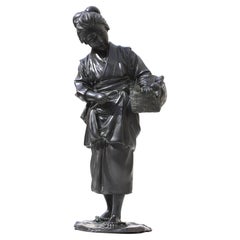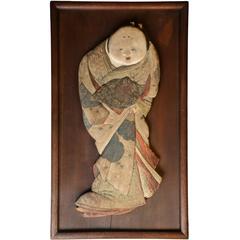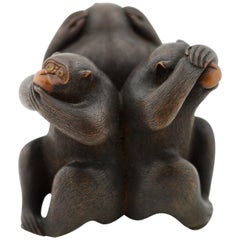
Japanese Wood Okimono of Three Monkeys Meiji Period
View Similar Items
Want more images or videos?
Request additional images or videos from the seller
1 of 6
Japanese Wood Okimono of Three Monkeys Meiji Period
About the Item
- Dimensions:Height: 2 in (5.08 cm)Diameter: 3 in (7.62 cm)
- Materials and Techniques:
- Period:
- Date of Manufacture:circa Late 19th Century
- Condition:
- Seller Location:West Palm Beach, FL
- Reference Number:1stDibs: LU3860117753662
About the Seller
5.0
Vetted Seller
These experienced sellers undergo a comprehensive evaluation by our team of in-house experts.
Established in 1989
1stDibs seller since 2018
92 sales on 1stDibs
Typical response time: 12 hours
More From This SellerView All
- Japanese Lacquer, Bone and "Root" Wood Screen Meiji PeriodLocated in West Palm Beach, FLA Japanese lacquer, bone and "Root" wood screen Meiji period, late 19th century of rectangular form, inlaid and applied in relief with finely carved bone with large leafy peony spr...Category
Antique 19th Century Abstract Sculptures
MaterialsLacquer
- Chinese Polychrome-Decorated Carved Wood Figure of a BodhisattvaLocated in West Palm Beach, FLA Chinese polychrome-decorated carved wood figure of a Bodhisattva Standing regally with her hands in vitarka mudra, a five-pointed diadem set on her head, the angular face with bro...Category
20th Century Sculptures and Carvings
MaterialsWood
- Bronze Model of a Heron Maiden Holding a Fish Basket Japanese, Meiji PeriodLocated in West Palm Beach, FLA bronze Model of a Heron Maiden holding a fish basket Japanese, Meiji Period late 19th century realistically rendered, all finely patinated, Signed Height 18.87 in. (46 cm.)Category
Antique 19th Century Antiquities
MaterialsBronze
- Satsuma Earthenware Vase and Cover, Japanese, Meiji PeriodBy SatsumaLocated in West Palm Beach, FLA Satsuma Earthenware vase and cover, Japanese, Meiji period, (1868-1912) decorated in polychrome enamels and gilt over a clear, crackled glaze, delicately painted with samurai on ...Category
Antique 1890s Antiquities
MaterialsCeramic
- Japanese Satsuma Earthenware Vase by Kinkozan, Meiji PeriodBy KinkozanLocated in West Palm Beach, FLA Japanese Satsuma Earthenware Vase by Kinkozan, Meiji period (1868-1912) The body inset with two panels, one depicting figures seated around a table, the other painted with a joyful scene in a shrine, all reserved on a blue ground decorated with a gilt flower pattern, signed Nihon Kyoto Kinkozan zo...Category
20th Century Antiquities
MaterialsCeramic
- Japanese Blue and White Decorated Porcelain Plate, Meiji Period (1868-1912)Located in West Palm Beach, FLJAPANESE BLUE AND WHITE DECORATED PORCELAIN PLATE, MEIJI PERIOD (1868-1912) the underside with impressed signature, with a tightly scalloped edge, border of stylized motifs, the cen...Category
20th Century Antiquities
MaterialsPorcelain
You May Also Like
- Japanese Meiji Period Carved Wood Okimono Man with RabbitsLocated in Newark, EnglandThe charming figure, carved from a single piece of wood is exceptionally carved showing the male figure with humorous expression holding two Rabbits one by the ears and the second under his arm. A third Rabbit stands at the feet of the male looking up, each rabbit with a different expression. The male figure is wearing traditional Japanese attire with his hair tied back stood upon a naturalistic base. The figure dates to the Meiji Period (1868-1912) circa 1900. Notes The Rabbit is one of the 12 animals to feature in the Japanese Zodiac signs which follows the Chinese astrological system along with the Rat, Ox, Tiger, Rabbit, Dragon, Snake, Horse, Goat, Monkey, Rooster, Dog, Pig. Such division is connected with the Jupiter cycle around the Sun, which lasts about 12 years. As 2023 is the year of the Rabbit...Category
Antique Early 1900s Japanese Meiji Sculptures and Carvings
MaterialsWood
- Japanese Erotic Otofuku Folk Art Carving, Late Meiji Period, circa 1900Located in Prahran, VictoriaRare and highly unusual Japanese Folk Art wood carving depicting the folk heroine and good luck figure Otafuku with a finely painted erotic design on the interior and a carved inscri...Category
Early 20th Century Japanese Meiji Sculptures and Carvings
MaterialsCypress
- Japanese Tokyo School Bronze Okimono of a Farmer, Meiji PeriodLocated in Austin, TXA very fine and detailed Tokyo School cast bronze okimono (decorative sculpture) of a smiling farmer, Meiji period, late 19th century, Japan. The e...Category
Antique Late 19th Century Japanese Meiji Sculptures and Carvings
MaterialsBronze
- Japan 1890 Meiji Period Signed Okimono Sculpture of a Group of Skeletons SmokingLocated in Miami, FLSculptural signed Okimono from the Japanese Meiji period (1868-1912). Very rare, unusual and large sculptural assembling of a dysplaying piece of okimono. Created in Japan during the imperial period of the Meiji (1868-1912). This extraordinary okimono was carefully carved depicting a group of three intricately and realistically rendered carousing skeletons (Gaikotsu) in relax and resting position, drinking and smoking. Two of them, probably males representations are resting on a wicker sofa. The third, is a woman seated in a lower stool offering drinking cups of sake on a round tray. A small rectangular bench is arranged in the scene. The composition is displayed on a four-legged carved wood platform with an inlaid red plaque engraved with the artist's signature. The level of detail and the quality of the carving is truly exceptional. Has an exact measurements of 209.55 mm by 196.85 mm by 127.76 mm (8.25 x 7.75 x 5.03 Inches). After an extensive collection of data, comparables and references to this piece, we have only been able to find only three okimono sculptures like this with similar themes and the same quality of work. References Note: A similar carving of four skeletons playing an animated game of dominos, signed Shutaro in an inlaid rectangular red plaque, was sold in London by Christie’s South Kensington in October 14 2014, Lot 120 Sale 5546. References Note: A similar carving with four skeletons in an otherwise typical victorian scene of a photographer and three sitters signed Shutaro in an inlaid rectangular red plaque, was sold in Edinburgh at Lyon & Turnbull in November 7, 2018. References Note: A similar carving with five skeletons seated, playing cards and drinking, was sold in London by John Nicholson Fine Art on September 26, 2018. Meiji period, is an era of Japanese history that extended from October 23, 1868 to July 30, 1912. The Meiji era was the first half of the Empire of Japan, when the Japanese people moved from being an isolated feudal society at risk of colonization by Western powers to the new paradigm of a modern, industrialized nation state and emergent great power, influenced by Western scientific, technological, philosophical, political, legal, and aesthetic ideas. As a result of such wholesale adoption of radically different ideas, the changes to Japan were profound, and affected its social structure, internal politics, economy, military, and foreign relations. The period corresponded to the reign of Emperor Meiji. It was preceded by the Keio era and was succeeded by the Taisho era, upon the accession of Emperor Taisho. Okimono, is a Japanese term meaning for display an ornament; art object; or decorative object, usually displayed in a tokonoma or butsudan "Buddhist altar". It is an ornament or figure, especially one placed in a guest room. An okimono may be a small Japanese...Category
Antique 1890s Japanese Meiji Sculptures and Carvings
MaterialsWood
- Japan 1890 Meiji Period Signed Assembling of Okimono with a Group of SkeletonsLocated in Miami, FLA signed Okimono from the Japanese Meiji period (1868-1912). Very rare, unusual and large sculptural assembling of a dysplaying piece of okimono. Created in Japan during the imperial period of the Meiji (1868-1912). This extraordinary piece okimono sculpture depict a group of four intricately and realistically rendered carousing males skeletons representations (Gaikotsu) standing in several position. One skeleton is crouched down playing with mouses in the floor. The second is seated resting in the other's back, peacefully smoking opium. The others two are fully standing in interacting position. The entire composition is arranged freely displayed on the wood base including a woven basket, apparently with food and four playfull mouses. There are an extra five mouses in different positions, freely playing around, all of them with the eyes accented with carved black ebony. The composition is displayed on a four-legged free form carved wood platform with an inlaid red plaque engraved with the artist's signature. The level of detail and the quality of the carving is truly exceptional. Has an exact measurements of 216.15 mm by 139.7 mm by 359.41 mm (8.51 x 5.5 x 14.15 Inches). After an extensive collection of data, comparables and references to this piece, we have only been able to find only three okimono sculptures like this, with similar themes and the same quality of work. References Note: A similar carving of four skeletons playing an animated game of dominos, signed Shutaro in an inlaid rectangular red plaque, was sold in London by Christie’s South Kensington in October 14 2014, Lot 120 Sale 5546. References Note: A similar carving with four skeletons in an otherwise typical victorian scene of a photographer and three sitters signed Shutaro in an inlaid rectangular red plaque, was sold in Edinburgh at Lyon & Turnbull in November 7, 2018. References Note: A similar carving with five skeletons seated, playing cards and drinking, was sold in London by John Nicholson Fine Art on September 26, 2018. Meiji period, is an era of Japanese history that extended from October 23, 1868 to July 30, 1912.The Meiji era was the first half of the Empire of Japan, when the Japanese people moved from being an isolated feudal society at risk of colonization by Western powers to the new paradigm of a modern, industrialized nation state and emergent great power, influenced by Western scientific, technological, philosophical, political, legal, and aesthetic ideas. As a result of such wholesale adoption of radically different ideas, the changes to Japan were profound, and affected its social structure, internal politics, economy, military, and foreign relations. The period corresponded to the reign of Emperor Meiji. It was preceded by the Keio era and was succeeded by the Taisho era, upon the accession of Emperor Taisho. Okimono, is a Japanese term meaning for display an ornament; art object; or decorative object, usually displayed in a tokonoma or butsudan "Buddhist altar". It is an ornament or figure, especially one placed in a guest room. An okimono may be a small Japanese carving...Category
Antique 1890s Japanese Meiji Sculptures and Carvings
MaterialsWood
- Antique Japanese Gilded Statue of a Shinto God, Momoyama PeriodLocated in Prahran, VictoriaA Japanese statue of a Shinto god from the Momoyama period. Hand carved from wood with a layer of gesso and hand painted flowing robes with delicately wroug...Category
Antique 16th Century Japanese Sculptures and Carvings
MaterialsGesso, Wood
Recently Viewed
View AllMore Ways To Browse
Speak No Evil
Hear No Evil
Meiji Okimono
Hear No Evil See No Evil
See No Evil Speak No Evil
Monkey Evil
No Evil Monkeys
See No Evil Monkeys
Meiji Monkey
Monkey Evil See Speak Hear
See Hear Speak No Evil Monkey
Wood Okimono
Japanese Wood Okimono
Three Japanese Monkeys
Dynasty China Pottery
Rare Antiquities
Chinese Bc
Dynasty Asian Pottery

